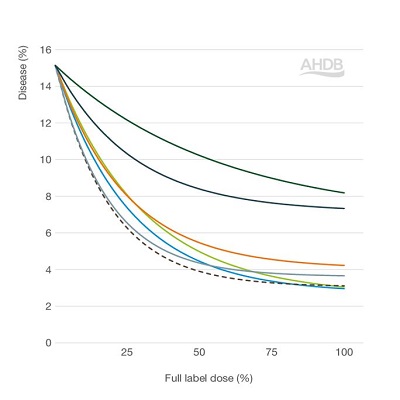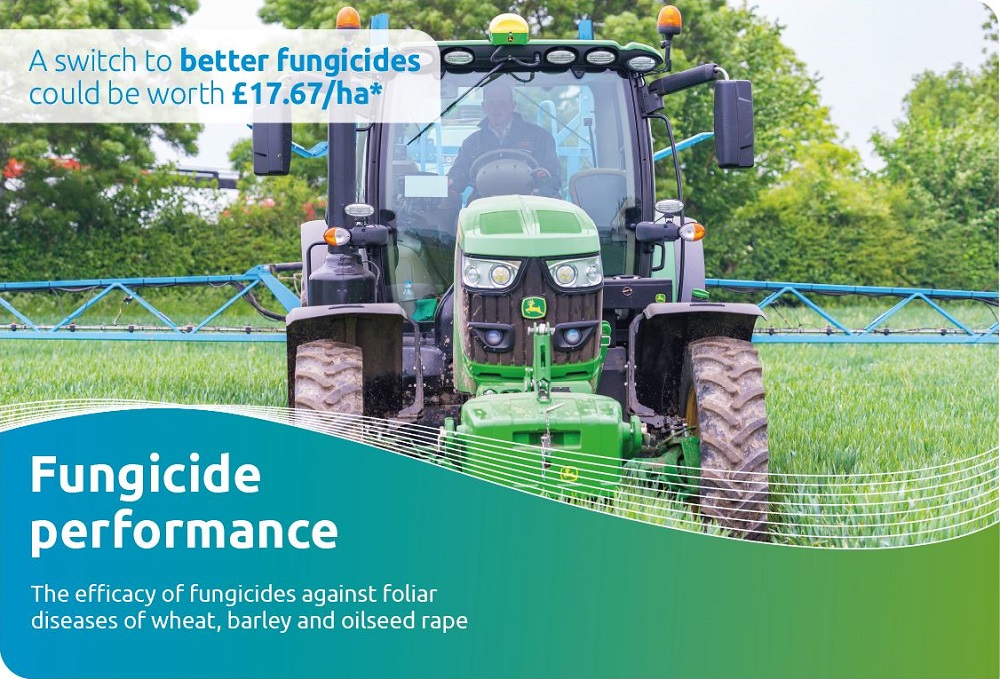Is the fungicide performance project fit for purpose?
Wednesday, 5 July 2023
Jason Pole examines whether AHDB’s fungicide efficacy work for wheat, barley and oilseed rape is making a difference to farmers.
For almost 30 years, a team has tested the efficacy of chemistry used to battle major crop diseases.
The replicated trial series provides insight into the potential power of individual active ingredients.
The results can be used to build fungicide programmes tailored to local disease pressures.
Critically, the work provides evidence to help protect chemistry from resistance.
The wheat trial series is the oldest, going back to 1994, with the barley series beginning in 2002 and the oilseed rape series starting in 2006.
Value for money?
The AHDB sector plan for Cereals & Oilseeds has scope to fund independent product testing, if it is likely to provide a good return on investment.
However, calculating such returns is a challenge for many research projects, including fungicide performance.
The project’s information is just one part of a complex decision-making process. Often, results arrive at the farm indirectly too (via an agronomist).
In 2021, AHDB commissioned an independent evaluation. The evaluators worked with farmers (150), all advised by independent agronomists, and identified a typical net yield gain worth £17.67 per hectare associated with a change to a superior fungicide product.
With this figure in mind, it would only take a few thousand hectares treated with superior products to cover the cost of the project (approximately £125,500 per year).
Although the calculation did not include costs saved/incurred or reduced doses, it did give the sector council confidence to continue investment in the project.
Improving the project
As part of the evaluation, telephone interviews (17) identified ways to improve the project.
Generally, agronomists felt well informed and were reasonably happy with the data. AHDB works closely with agronomists because of their role in developing practical field-level recommendations. It is why results are released at the AHDB Agronomy Conference each December.
However, the focus on the agronomist may come at a cost, with a feeling that the project is too disconnected from farmers.
The group had a clear message: AHDB must communicate directly with levy payers and focus on key changes and trends.
In response, the sector plan pledges to make fungicide performance data even more accessible.
The first step is communicating what the trials do and don’t do.
Trial overview
The team follows ground rules to ensure that they produce the most valuable data possible. For example, they compare new (pre-registration) active ingredients against established standards.
In spring 2021, for example, this allowed the team to release data for fenpicoxamid – a new mode of action (quinone inside inhibitor) for cereal disease management.
Typically, the trials test single active ingredients. Although unlikely to reflect commercial practice, the application of a product ‘straight’ or ‘solo’ is the easiest way to measure its efficacy.
The trials use highly susceptible varieties in areas most likely to produce high pressure for the target disease(s).
Current disease targets
Wheat: septoria tritici, yellow rust, brown rust, and fusarium and microdochium.
Barley: rhynchosporium, net blotch, ramularia, mildew, brown rust.
Oilseed rape: light leaf spot and phoma leaf spot.
The number of trials reflects the economic importance of the disease, with septoria tritici having the most trials.
For cereal and oilseed rape trials, treatments are applied once and twice, respectively. The frequency provides the simplest test of each active ingredient.
Four doses are used. This allows the creation of the classic ‘dose-response’ curves, which show how much more disease control or yield uplift is associated with higher doses. It also reveals the relative performance between products.
An example of dose-response curves
 AHDB
AHDB
For cereals, the doses are quarter, half, full and double the recommended label rate (the latter improves the ‘fit’ of curve, but is not published).
For oilseed rape, the doses are quarter, half, three quarters and full (higher doses are not used to avoid growth regulatory effects).
David Walston, Thriplow Farm near Cambridge, and grower member of the AHDB Cereals & Oilseeds sector council, said:
“I use fungicide performance data to get the best blend between efficacy and cost…lower rates are also beneficial from a resistance management standpoint – finding the optimum is a win-win situation.”
Get the latest results
Dose-response curves and fungicide activity tables
Fungicide resistance information
For a regional perspective, the fungicide performance team also presents at many AHDB events: ahdb.org.uk/events
Project scientific partners: ADAS, Harper Adams University, NIAB and SRUC.
 AHDB
AHDB
*Figure based on AHDB research of the typical average value (net yield gain) associated with a change to a superior fungicide product (before calculation of costs incurred/saved).
Topics:
Sectors:
Tags:


